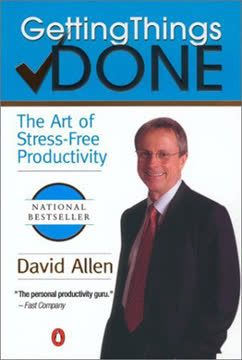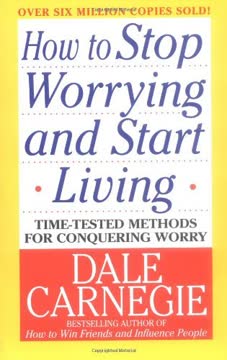Key Takeaways
1. Procrastination is an emotion management problem, not a time management issue
Procrastination, at its very core, is an emotion management problem, not a time management problem.
Emotional avoidance drives procrastination. When we face tasks that inspire negative feelings like boredom, frustration, or anxiety, we tend to put them off. This delay provides short-term relief but long-term consequences. Time management strategies alone won't solve this issue because they don't address the underlying emotional drivers.
To overcome procrastination, we must learn to:
- Recognize the emotions behind our avoidance
- Develop strategies to manage these uncomfortable feelings
- Build emotional resilience to face challenging tasks
Understanding this emotional component is crucial for developing effective anti-procrastination strategies that go beyond simple scheduling and to-do lists.
2. Understanding the "monkey mind" is key to overcoming procrastination
The monkey wants to run away from the uncomfortable feelings and, as a result, we become resistant to the task and experience an urge to do something more enjoyable.
The "monkey mind" seeks immediate gratification. This part of our brain operates on a simple principle: avoid discomfort and seek pleasure. It's the voice that urges us to check social media instead of studying or watch TV instead of exercising. Recognizing this internal conflict between our rational goals and our impulsive desires is the first step in overcoming procrastination.
Strategies to tame the monkey mind include:
- Acknowledging its presence without judgment
- Creating a delay between impulse and action
- Rewarding yourself for completing challenging tasks
- Practicing mindfulness to observe thoughts without acting on them
By understanding and managing our monkey mind, we can better align our actions with our long-term goals and values.
3. Awareness and implementation intentions are powerful tools against delay
Implementation intentions are simple "if-then" plans designed to program your unconscious mind to act in a desired way in a specific future situation.
Conscious planning overcomes unconscious resistance. Implementation intentions are a scientifically proven method to bridge the gap between intention and action. By clearly defining when, where, and how you'll perform a task, you create a mental trigger that bypasses the need for conscious decision-making in the moment.
Examples of implementation intentions:
- "If it's 7 AM, then I'll immediately get out of bed and start my morning routine."
- "When I finish lunch, I'll spend 30 minutes working on my most important project."
- "If I feel the urge to check social media, I'll do 5 push-ups instead."
Research shows that people who use implementation intentions are significantly more likely to follow through on their goals, often doubling or tripling their success rates compared to those who don't use this strategy.
4. The paradox of getting started: Just begin to overcome resistance
Once you get started, you realize it's not nearly as bad as you thought.
Action breeds motivation, not vice versa. Many people wait to feel motivated before starting a task, but this approach often leads to prolonged procrastination. The paradox is that simply beginning a task, even for just a few minutes, can dramatically reduce the perceived difficulty and increase motivation.
This phenomenon occurs because:
- Starting breaks the psychological inertia of procrastination
- Engagement with the task often reveals it's not as daunting as imagined
- Progress, no matter how small, generates positive momentum
To leverage this paradox, commit to working on a task for just 5 minutes. Often, you'll find yourself naturally continuing beyond this initial commitment once the hardest part – getting started – is behind you.
5. Minimize distractions and optimize your environment for productivity
Proximity to temptation is one of the deadliest determinants of procrastination.
Your environment shapes your behavior. In today's world, we're surrounded by an unprecedented number of distractions – from smartphones to streaming services. These temptations make it increasingly difficult to focus on important but less immediately rewarding tasks.
To create a productivity-enhancing environment:
- Use website blockers to limit access to distracting sites
- Keep your phone out of sight or in another room while working
- Declutter your workspace to reduce visual distractions
- Create dedicated spaces for work and relaxation
By proactively managing your environment, you reduce the willpower required to stay on task and make productive choices easier and more automatic.
6. Self-compassion trumps self-criticism in battling procrastination
Forgiveness — not guilt — helped them get back on track.
Kindness motivates better than punishment. Many procrastinators fall into a cycle of self-criticism, believing that being hard on themselves will increase motivation. However, research shows that self-compassion is far more effective in reducing procrastination and improving overall well-being.
Self-compassion involves:
- Acknowledging that everyone struggles with procrastination sometimes
- Treating yourself with the same kindness you'd offer a friend
- Using setbacks as learning opportunities rather than reasons for self-punishment
By practicing self-compassion, you create a supportive internal environment that makes it easier to face challenging tasks and bounce back from inevitable slip-ups.
7. Emotion surfing: Accept negative feelings to move past them
Staying put and accepting negative emotions is often all it takes to beat procrastination.
Resisting emotions strengthens them. When we try to suppress or avoid uncomfortable feelings associated with a task, we often end up procrastinating. Emotion surfing is a mindfulness technique that involves observing and accepting these emotions without judgment, allowing them to pass naturally.
Steps for emotion surfing:
- Notice the urge to procrastinate
- Pause and observe the physical sensations in your body
- Allow the feelings to be present without trying to change them
- Recognize that the intensity of the emotions will naturally subside
- Take action on your task, even while feeling uncomfortable
By practicing emotion surfing, you develop the ability to act in alignment with your goals, regardless of your momentary emotional state.
8. Willpower is like a muscle: It can be strengthened and depleted
Just like a muscle, self-control gets fatigued with heavy use, and thus varies in strength from moment to moment.
Strategic willpower management is crucial. Understanding willpower as a limited resource that can be depleted and replenished helps explain why we might procrastinate more later in the day or after making many decisions. However, like a muscle, willpower can also be strengthened through consistent practice.
To optimize your willpower:
- Tackle important tasks early in the day when willpower is highest
- Break large tasks into smaller, manageable chunks
- Practice small acts of self-control regularly to build your "willpower muscle"
- Replenish willpower through rest, nutrition, and stress-reduction techniques
By treating willpower as a valuable resource and learning to manage it effectively, you can significantly improve your ability to resist procrastination and achieve your goals.
9. Health and energy levels directly impact your ability to resist procrastination
If you lack energy, you don't have self-control. Or as Roy Baumeister puts it: no glucose, no willpower.
Physical well-being underpins mental discipline. The connection between physical health and procrastination is often overlooked, but it's crucial. Low energy levels, poor sleep, and inadequate nutrition can severely impair your ability to resist the urge to procrastinate.
To optimize your physical state for productivity:
- Prioritize consistent, quality sleep
- Maintain stable blood sugar levels through balanced nutrition
- Exercise regularly to boost energy and mental clarity
- Manage stress through relaxation techniques or mindfulness practices
By taking care of your physical health, you create a strong foundation for mental resilience and self-control, making it easier to tackle challenging tasks and resist the pull of procrastination.
Last updated:
FAQ
What's "Stop Procrastinating" by Nils Salzgeber about?
- Overview: "Stop Procrastinating" is a guide focused on overcoming procrastination by understanding its root causes and implementing practical strategies to combat it.
- Author's Journey: Nils Salzgeber shares his personal transformation from a chronic procrastinator to someone who has developed effective self-discipline.
- Structure: The book is organized into chapters that explore different aspects of procrastination, including its psychological underpinnings and practical solutions.
- Goal: The ultimate aim is to help readers reduce procrastination, increase productivity, and improve their overall quality of life.
Why should I read "Stop Procrastinating" by Nils Salzgeber?
- Practical Solutions: The book offers actionable strategies that can be immediately implemented to reduce procrastination.
- Personal Insight: Nils Salzgeber shares his personal experiences, making the advice relatable and grounded in real-life challenges.
- Comprehensive Approach: It covers both the emotional and practical aspects of procrastination, providing a holistic approach to overcoming it.
- Self-Improvement: Reading this book can lead to increased productivity, better time management, and a more disciplined lifestyle.
What are the key takeaways of "Stop Procrastinating" by Nils Salzgeber?
- Awareness is Crucial: Understanding your procrastination triggers is the first step toward change.
- Emotion Management: Procrastination is often an emotional issue, not just a time management problem.
- Implementation Intentions: Creating if-then plans can program your unconscious mind to act in desired ways.
- Willpower as a Muscle: Willpower can be strengthened over time with practice and is essential for overcoming procrastination.
How does Nils Salzgeber define procrastination in "Stop Procrastinating"?
- Irrational Delay: Procrastination is the act of delaying tasks despite knowing it’s not in your best interest.
- Emotional Avoidance: It often stems from a desire to avoid negative emotions associated with certain tasks.
- Monkey Analogy: Salzgeber uses the analogy of a monkey in your brain that seeks immediate gratification, leading to procrastination.
- Self-Regulation Failure: Procrastination is a failure of self-control, where short-term impulses override long-term goals.
What is the "Monkey Analogy" in "Stop Procrastinating"?
- Pleasure-Seeking Monkey: The monkey represents the part of your brain that seeks immediate gratification and avoids discomfort.
- Conflict with Rational Self: It often conflicts with your rational self, which wants to achieve long-term goals.
- Emotional Influence: The monkey is driven by emotions, making it a key player in why people procrastinate.
- Overcoming the Monkey: The book provides strategies to manage this part of your brain and reduce its influence on your actions.
What are "Implementation Intentions" in "Stop Procrastinating"?
- If-Then Plans: These are simple plans that link a specific cue with a desired behavior, e.g., "If I get home, then I will go to the gym."
- Automatic Behavior: They help program your unconscious mind to automatically act in ways that reduce procrastination.
- Proven Effectiveness: Research shows that implementation intentions significantly increase the likelihood of achieving goals.
- Practical Application: The book provides examples and encourages readers to create their own implementation intentions.
How does "Stop Procrastinating" address emotion management?
- Emotional Triggers: The book identifies that procrastination is often triggered by negative emotions like anxiety or overwhelm.
- Emotion Surfing: Salzgeber introduces the concept of "emotion surfing," where you observe and accept emotions without acting on them.
- Mindfulness Techniques: Techniques like mindfulness are recommended to help manage emotions and reduce procrastination.
- Long-Term Benefits: By improving emotion management, you can reduce procrastination and improve overall well-being.
What role does willpower play in "Stop Procrastinating"?
- Willpower as a Muscle: Willpower is likened to a muscle that can be strengthened with practice and exercise.
- Energy Dependent: It requires energy, and low energy levels can lead to willpower depletion and increased procrastination.
- Improvement Strategies: The book suggests ways to improve willpower, such as meditation, exercise, and simplifying life.
- Direct Impact: Stronger willpower directly correlates with reduced procrastination and better self-control.
What are some practical strategies from "Stop Procrastinating"?
- Two-Minute Rule: If a task takes less than two minutes, do it immediately to prevent procrastination.
- Temptation Bundling: Combine a task you procrastinate on with something enjoyable to make it more appealing.
- Commitment Contracts: Use rewards and punishments to motivate yourself to complete tasks.
- Daily Planning: Plan your day the night before to reduce decision fatigue and increase productivity.
What are the best quotes from "Stop Procrastinating" and what do they mean?
- "Procrastination is the thief of time." This highlights how procrastination steals valuable time that could be used productively.
- "The monkey in your brain operates on the simple principle of approaching what feels good." This explains the emotional basis of procrastination.
- "Awareness is the first step toward change." Recognizing procrastination patterns is crucial for overcoming them.
- "Willpower is the ability to get done what needs to get done, whether you feel like it or not." This underscores the importance of self-discipline in combating procrastination.
How does "Stop Procrastinating" suggest handling distractions?
- Eliminate or Complicate Access: Make distractions less accessible by blocking websites or deleting apps.
- Environmental Triggers: Mold your environment to support productivity by removing triggers for procrastination.
- Commitment Contracts: Use contracts to make distractions less appealing by associating them with negative consequences.
- Awareness and Control: Increase awareness of distractions to better manage and control them.
What is the role of self-compassion in "Stop Procrastinating"?
- Alternative to Self-Criticism: Self-compassion is presented as a healthier alternative to self-criticism, which often leads to more procrastination.
- Emotional Resilience: It helps build emotional resilience, making it easier to recover from setbacks and continue working toward goals.
- Reduced Fear of Failure: Self-compassion reduces the fear of failure, encouraging more action and less procrastination.
- Practical Application: The book suggests practicing self-forgiveness and treating oneself with kindness to improve productivity.
Review Summary
Stop Procrastinating receives mostly positive reviews, with readers praising its practical tips, concise format, and relatable writing style. Many found the book's focus on emotion management insightful and appreciated the actionable advice. Some readers implemented strategies immediately and reported positive results. Critics noted a lack of references and oversimplification of complex issues. Overall, reviewers found the book helpful for understanding and combating procrastination, with many recommending it as a valuable resource for those struggling with the habit.
Similar Books









Download PDF
Download EPUB
.epub digital book format is ideal for reading ebooks on phones, tablets, and e-readers.




